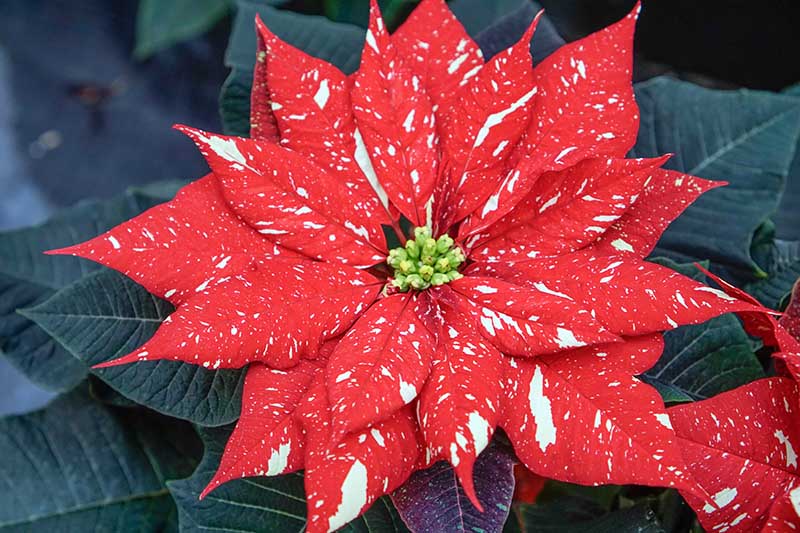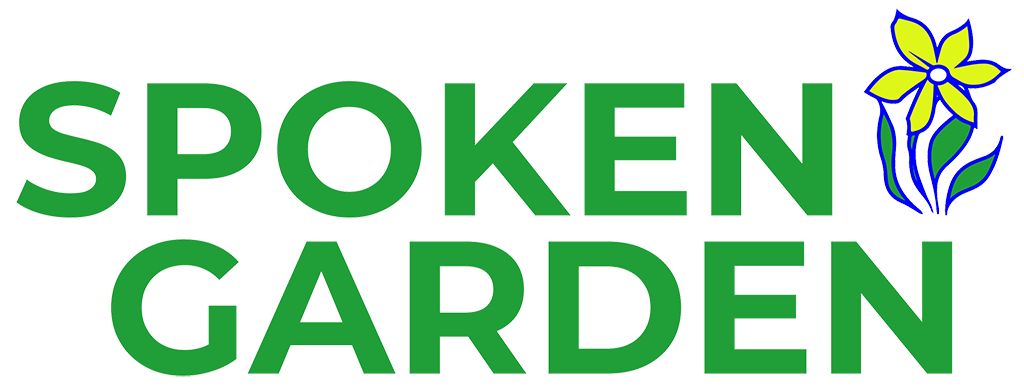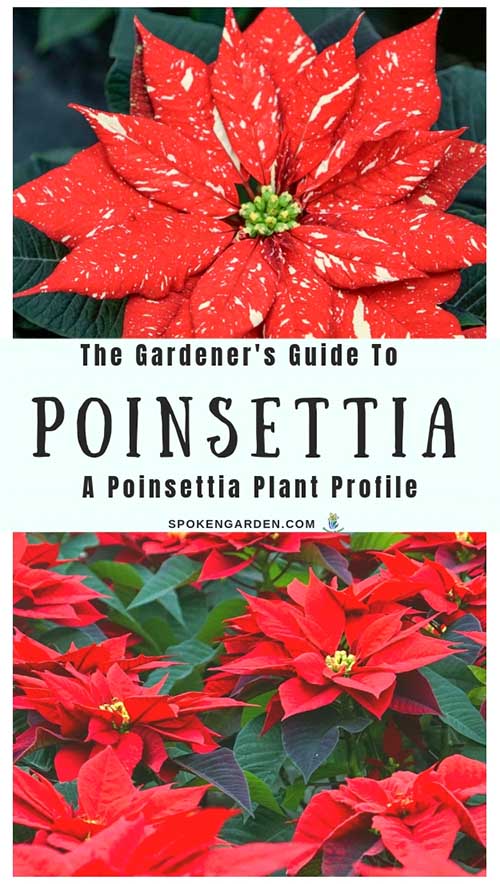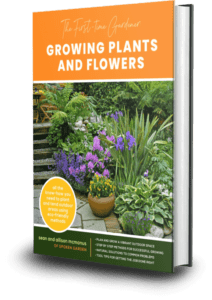Learn all about Poinsettias (Euphorbia pulcherrima) in this gardener’s guide of these beautiful, indoor holiday plants, including plant care, history, fun facts, and more.

Poinsettias (Euphorbia pulcherrima) are the quintessential indoor plant during the holiday season. Revered throughout Mexican history for their vibrant red leaves and significance to Christmas, Poinsettias are a massive commercial success and can be found adorning households around the world.
In our Poinsettia plant profile below, you’ll learn about the many benefits this beautiful plant has to offer.
Quick Plant Care Facts
| Sun Exposure | Full sun and light shade only in Zone 13. |
| Water Needs | Keep soil moist, but do not let water stand in saucer or let soil get water-logged. |
| Soil Needs | Well-draining soil. |
| Cold-Hardiness Zones | USDA hardiness zones 9 to 11. |
| Bloom Time | Winter to early spring. |
| Flower Colors | Red in single-flower (bracts) form. Double-flower (bracts) forms come in red, white, pink, yellowish, and marbled. |
| Mature Height/Width | In native Mexico or similar climate, it can get up to 10 feet tall and 6 feet wide. |
| Plant Spacing | If under native conditions, plan to plant on 3-4 foot centers. If potted and indoors, space pot to pot. |
Become a Plant Profile Club member here, if you want more poinsettia plant care information than this!
[convertkit form=1655951]
Read our poinsettia plant guide below to learn:
- How to maintain and care for poinsettia in your house.
- The best growing conditions for your poinsettia.
- The history of poinsettia and its association with the holidays.
- Fun facts and so much more.
By the way, our Poinsettia plant profile guide below is meant for anyone who wants to learn more about this plant. We hope you enjoy it!
In a hurry? Pin it for later!!
Poinsettias: Why We’re Featuring This Plant
First, the holiday season and Poinsettias go hand in hand. They are the iconic holiday and Christmas plant due to decades of persistent marketing. By placing these plants on table-tops, near fireplaces, end tables, or elsewhere, they succeed in adding beautiful pops of color around the house to enjoy during the month of December (and beyond).
In addition, these indoor plants are really easy to maintain. Their vibrant colors can last a good length of time if watered and cared for properly. They need bright, but filtered light and will flower in the winter. Their low maintenance needs are perfect for a beginning gardener who would like to care for an indoor plant.
Finally, we’re featuring the Poinsettia because of their interesting history and cultural significance. Native to Central America, their roots can be traced back to the Ancient Aztecs.
You can find more of poinsettia care needs, when it flowers, its uses, and more by becoming a Plant Profile Club member.
Euphorbia pulcherrima: History and Uses
As you begin your journey to understand more about Poinsettia, a good place to start is to first learn about their large family group and their history. Read on below for more!
Poinsettia Family
Poinsettias are in the Euphorbiaceae plant family. Also known as the Spurge family, this family group has more than 7,500 species of flowering plants mainly found in the tropics.
Common characteristics between the members of this family group include colorful bracts (leaf structures) and milky sap-like juice, some of which can be extremely toxic depending on species.
Other Euphorbiaceae family members include Crown-of-Thorns, Mexican Jumping Bean, and the castor oil plant (Ricinus communis) to name a few.
History of Poinsettias
Poinsettia has an interesting history going back to 14th Century Mexico. Research indicates that the Poinsettia was used by the Aztecs as early as the 14th Century for dyes and medicine. They cleverly used the leaves, or bracts, as a dye for clothing, possibly makeup or other purposes. The white sap was used as a medicine to control fevers.
Eventually, Poinsettias began to show up in 16th Century Mexico and became symbolic of Christmas. A legend explains how a young girl, too poor to leave a gift for Jesus on Christmas, offered a handful of weeds which angels turned into beautiful, red Poinsettias.
In the 1800s, Dr. Joel R. Poinsett introduced the Poinsettia to the United States around 1825. Poinsett was a botanist, physician and the first United States Ambassador to Mexico. Upon finding the Poinsettia shrub in the wild, he brought samples back to his greenhouse in South Carolina. Eventually, the Poinsettia was named after Joel R. Poinsett.
By the early 1900s, poinsettias were cultivated for commercial sale during the holidays and the rest is history.
Currently, the Poinsettia is one of the most popular indoor plants during the holiday season and especially Christmas.
If you want to read more about the history of Poinsettias, check out The American Phytopathological Society
Poinsettias Around the World
Poinsettias are sub-tropical plants that are native to southern Mexico and Central America. Here they grow in the wild as shrubs or small trees.
From Mexico, they found their way to the United States by the 18th century as explained above. What began as an interest in their beautiful colors literally bloomed into the holiday-plant industry we see today.
Symbolically, Poinsettia flowers have become a symbol of Christmas and are used as festive decor. In Mexican culture, the red leaves are symbolic of the blood of Jesus and the star-shaped leaf pattern is said to symbolize the Star of Bethlehem.
Today, Poinsettias continue to grace homes during the holiday season in much of North America. In addition, they are celebrated on December 12 which was designated as “National Poinsettia Day” in the U.S. due to the death of John Poinsett on this day in 1851.
Now that you’ve caught up on a brief history, let’s move on to the common characteristics of Poinsettia.
Poinsettia Care
Now that you’ve learned a bit of background information about this amazing perennial, it’s time to present you with an overall guide to coneflower plant care to get you started with the basics.
Then, after you read the table below, keep scrolling to learn more about specific seed planting steps, deadheading tips, and companion plants.
You can find more of poinsettia care needs, when it flowers, its uses, and more by becoming a Plant Profile Club member.
Poinsettia
| Common/Trade Name | Poinsettia (pronounced Poin-sett-e-a) |
| Botanical/Scientific Name | Euphorbia pulcherrima |
| Cultivars | Single-Form Bracts; Double-Form Bracts. No specific cultivars to speak of. |
| Zones | USDA - hardy to zones 9 to 11; Sunset - grows in zones 13, 16-24, and H1, H2, and indoors. |
| General Information | In the Euphorbiaceae family with over 7,500 different species. This species is most known for it's brightly colored "flowers" which aren't actually flowers at all, but modified leaves called bracts. The actual flower is in the center of the bracts and is inconspicuous. Plant only blooms when it experiences long nights; from winter into spring. |
| Native Environment | Native to Mexico. |
| Plant Type | Can be an evergreen, semi-evergreen, or a deciduous shrub depending on where it is grown. |
| Water Needs | Keep soil moist, but do not let water stand in saucer or let soil get water-logged. |
| Mature Height/Width | In native Mexico or similar climate, it can get up to 10 feet tall and 6 feet wide. |
| Bloom Time | Winter to early spring. |
| Flower Colors | Red in single-flower (bracts) form. Double-flower (bracts) forms come in red, white, pink, yellowish, and marbled. |
| Sun Exposure | Full sun and light shade only in Zone 13. |
| Growth Habit | Small to medium shrub; upright. |
| Soil Needs | Well-draining soil. |
| Fertilize | Only fertilize if in really nutrient poor soils. You can enhance the color of the bracts by fertilizing every 2-weeks with high nitrogen starting when the color starts to show. |
| Plant Spacing | If under native conditions, plan to plant on 3-4 foot centers. If potted and indoors, space pot to pot. |
| Suggested Companion/Arrangement Plants | Other Euphorbia species, Chrysanthemum, Holly, Ornamental Pepper, Christmas Cactus, Kalancho, Caladium, Cyclamen, Azaleas, Peace Lily, or Maidenhair Fern. |
| Maintenance Level | For the Holidays, keep in a sunny window and water, but don't let sit in standing water. Avoid sudden temperature changes and don't let leaves or stems touch window as this will lead to cold damage. To hold over after Holidays and use in your garden, let leaves drop off and then cut stems back to the last two buds. Store in a dark, cool, but dry area until the threat of frost is gone in the Spring and then set out in your garden in pot. If hardy to your local climate, you can plant directly in the ground in a protected area if frosty in fall and winter. Once planted outside, little to no watering is needed and not much maintenance if planted in correct location for native growth pattern. |
| Pest Susceptibility | Susceptible to Aphids, Thrips, Leaf-Miners, Spider-Mites, and others. Less stress to plant, the less these and other insects or diseases will be present. |
| Poisonous to Pets? | Can be toxic to dogs, cats, and horses, but to others too. Irritating to mouth and stomach, with sometimes causing vomiting. |
| Edible for Humans? | Milky sap is not considered to be poisonous. Can be irritating to stomach and skin, though. |
| Fun (or historical) Facts | - Poinsettia's are the national emblem of Madagascar. - There is a "Poinsettia Day" in the United States on December 12th, in honor of Joel Poinsett who died on this day in 1851. - Are native to Mexico and parts of Central America. - Montezuma was known to adorn his palace with Poinsettia's. - Central Americans cultivated Poinsettia's as a gift from the gods. |
Poinsettia Guide: Product Recommendations
Want to buy your own Poinsettia plants after learning all about their characteristics? Check out ePlanters for your Poinsettia pot accessories! At ePlanters, their planters are 100% recyclable. They also have all kinds of other types of planters to choose from. Right now from ePlanters, Save 10% with code EPTEN423
!!!
Or, do you need to stock up on other types of plants? Here’s a great winter deal that will help you fill up your garden with next season’s plants. Eden Brothers offers 100+ Herb seeds for sale. Buy by the packet or in bulk!
Poinsettia Plant Care Conclusion
Today, Poinsettias are one of the most popular holiday plants during the Christmas season.
Whether you are getting ready for your holiday parties and get-togethers or just want to liven up your home or office for the holidays, Poinsettia’s will give you that cheer and color you need! Not to mention this plant’s rich history and age-old symbolism.
With very little maintenance necessary, their bright colors and vibrant history, Poinsettia’s are the iconic holiday plant and can add to (most) indoor or outdoor gardens with their unique form, color, and seasonality.
Now we want to hear from you!
What questions do you have about Poinsettias? Let us know by leaving a quick comment below. Thanks!
Want to learn about other plants in your garden? Check out some of our previous plant profiles:
- Daffodils: A Gardener’s Guide and Plant Profile
- Crocosmia: A Gardener’s Guide and Plant Profile
- Primroses: A Gardener’s Guide and Plant Profile
- Tulips: A Gardener’s Guide and Plant Profile
- Grape Hyacinth: A Gardener’s Guide and Plant Profile
- Sunflowers: A Gardener’s Guide and Plant Profile
See you in the garden!
~ Sean and Allison
P.S. Find us on Pinterest, Twitter, Facebook, and Instagram so you don’t miss a thing!
References Used:
Spokengarden.com is a participant in the Amazon Services LLC Associates Program, an affiliate advertising program designed to provide a means for sites to earn advertising fees by advertising and linking to Amazon.com



